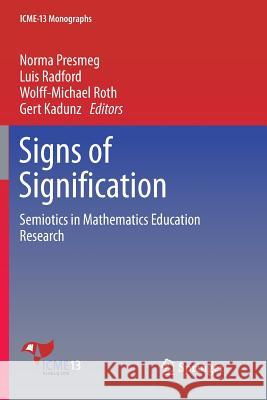Signs of Signification: Semiotics in Mathematics Education Research » książka
topmenu
Signs of Signification: Semiotics in Mathematics Education Research
ISBN-13: 9783319889160 / Angielski / Miękka / 2019 / 372 str.
Kategorie:
Kategorie BISAC:
Wydawca:
Springer
Seria wydawnicza:
Język:
Angielski
ISBN-13:
9783319889160
Rok wydania:
2019
Wydanie:
Softcover Repri
Ilość stron:
372
Waga:
0.53 kg
Wymiary:
23.39 x 15.6 x 2.01
Oprawa:
Miękka
Wolumenów:
01
Dodatkowe informacje:
Wydanie ilustrowane











